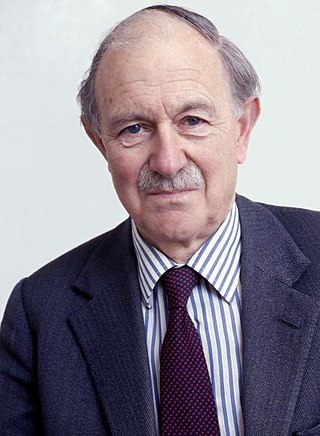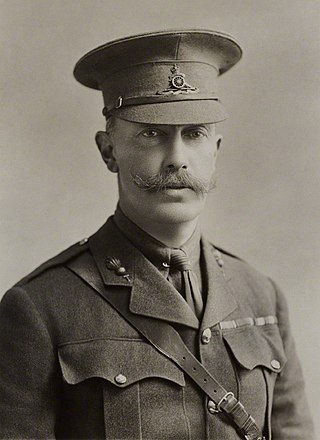Peerages in the United Kingdom form a legal system comprising both hereditary and lifetime titles, composed of various ranks, and within the framework of the Constitution of the United Kingdom form a constituent part of the legislative process and the British honours system. The British monarch is considered the fount of honour and is notionally the only person who can grant peerages, though there are many conventions about how this power is used, especially at the request of the British government. The term peerage can be used both collectively to refer to the entire body of titled nobility, and individually to refer to a specific title. British peerage title holders are termed peers of the Realm.

The Most Excellent Order of the British Empire is a British order of chivalry, rewarding contributions to the arts and sciences, work with charitable and welfare organizations, and public service outside the civil service. It was established on 4 June 1917 by King George V and comprises five classes across both civil and military divisions, the most senior two of which make the recipient either a knight if male or dame if female. There is also the related British Empire Medal, whose recipients are affiliated with, but not members of, the order.
Sir is a formal honorific address in English for men, derived from Sire in the High Middle Ages. Both are derived from the old French "Sieur" (Lord), brought to England by the French-speaking Normans, and which now exist in French only as part of "Monsieur", with the equivalent "My Lord" in English. Traditionally, as governed by law and custom, Sir is used for men who are knights and belong to certain orders of chivalry, as well as later applied to baronets and other offices. As the female equivalent for knighthood is damehood, the suo jure female equivalent term is typically Dame. The wife of a knight or baronet tends to be addressed as Lady, although a few exceptions and interchanges of these uses exist.
The order of precedence in the United Kingdom is the sequential hierarchy for Peers of the Realm, officers of state, senior members of the clergy, holders of the various Orders of Chivalry, and is mostly determined, but not limited to, birth order, place in the line of succession, or distance from the reigning monarch. The order of precedence can also be applied to other persons in the three legal jurisdictions within the United Kingdom:

The Most Honourable Order of the Bath is a British order of chivalry founded by King George I on 18 May 1725. The name derives from an elaborate medieval ceremony for preparing a candidate to receive his knighthood, of which ritual bathing was an element. While not all knights went through such an elaborate ceremony, knights so created were known as 'knights of the Bath', and likely from the upper classes.

The Most Distinguished Order of Saint Michael and Saint George is a British order of chivalry founded on 28 April 1818 by George, Prince of Wales, while he was acting as prince regent for his father, King George III. It is named in honour of two military saints, Michael and George.
The following is the order of precedence in England and Wales as of May 2024. Separate orders exist for men and women.
An unofficial order of precedence in Northern Ireland, according to Burke's Peerage, 106th Edition, this is not officially authorised by or published with authority from either Buckingham Palace or the College of Arms, or the Home Office, the Ministry of Justice or the Northern Ireland Office (NIO) of His Majesty's Government in the United Kingdom, or the Northern Ireland Assembly, or the Northern Ireland Executive.

The Royal Victorian Order is a dynastic order of knighthood established in 1896 by Queen Victoria. It recognises distinguished personal service to the monarch, members of the royal family, or to any viceroy or senior representative of the monarch. The present monarch, King Charles III, is the sovereign of the order. The order's motto is Victoria. The order's official day is 20 June. The order's chapel is the Savoy Chapel in London.

The Most Exalted Order of the Star of India is an order of chivalry founded by Queen Victoria in 1861. The Order includes members of three classes:
- Knight Grand Commander (GCSI)
- Knight Commander (KCSI)
- Companion (CSI)

George Herbert Hyde Villiers, 6th Earl of Clarendon,, styled Lord Hyde from 1877 to 1914, was a British Conservative politician from the Villiers family. He served as Governor-General of the Union of South Africa from 1931 to 1937.

James Hamilton, 2nd Duke of Abercorn, styled Viscount Hamilton until 1868 and Marquess of Hamilton from 1868 to 1885, was a British nobleman, courtier, and diplomat. He was the son of James Hamilton, 1st Duke of Abercorn, and Lady Louisa Jane Russell.

Major General Miles Francis Stapleton Fitzalan-Howard, 17th Duke of Norfolk,, known between 1971 and 1972 as the Lord Beaumont and until 1975 as the Lord Beaumont and Howard of Glossop, was a British Army general and peer. He was the eldest son of Bernard Fitzalan-Howard, 3rd Baron Howard of Glossop, and his wife Mona Fitzalan-Howard, 11th Baroness Beaumont.

Major General Lord Michael Fitzalan-Howard, was a senior officer in the British Army. He later served as Marshal of the Diplomatic Corps in the British Royal Household for ten years until 1982, and Gold Stick-in-Waiting and Colonel of The Life Guards for 20 years, finally retiring in 1999.

George Edward John Mowbray Rous, 3rd Earl of Stradbroke, was a British nobleman from Suffolk who served as a Territorial Army officer, as a junior government minister, and as the 15th Governor of Victoria, Australia.
The Order of Wearing of Australian honours includes Imperial honours if they were awarded prior to 6 October 1992. Imperial honours awarded after 5 October 1992 are considered foreign.
The order of precedence in Ireland was fixed by Royal Warrant on 2 January 1897 during Ireland's ties to the United Kingdom of Great Britain and Ireland.
The Central Chancery of the Orders of Knighthood has, at irregular intervals, notified for general information the positioning of the wearing of Orders, decorations, and medals of the United Kingdom in the London Gazette. The Order of Wear was last published in 2019.









